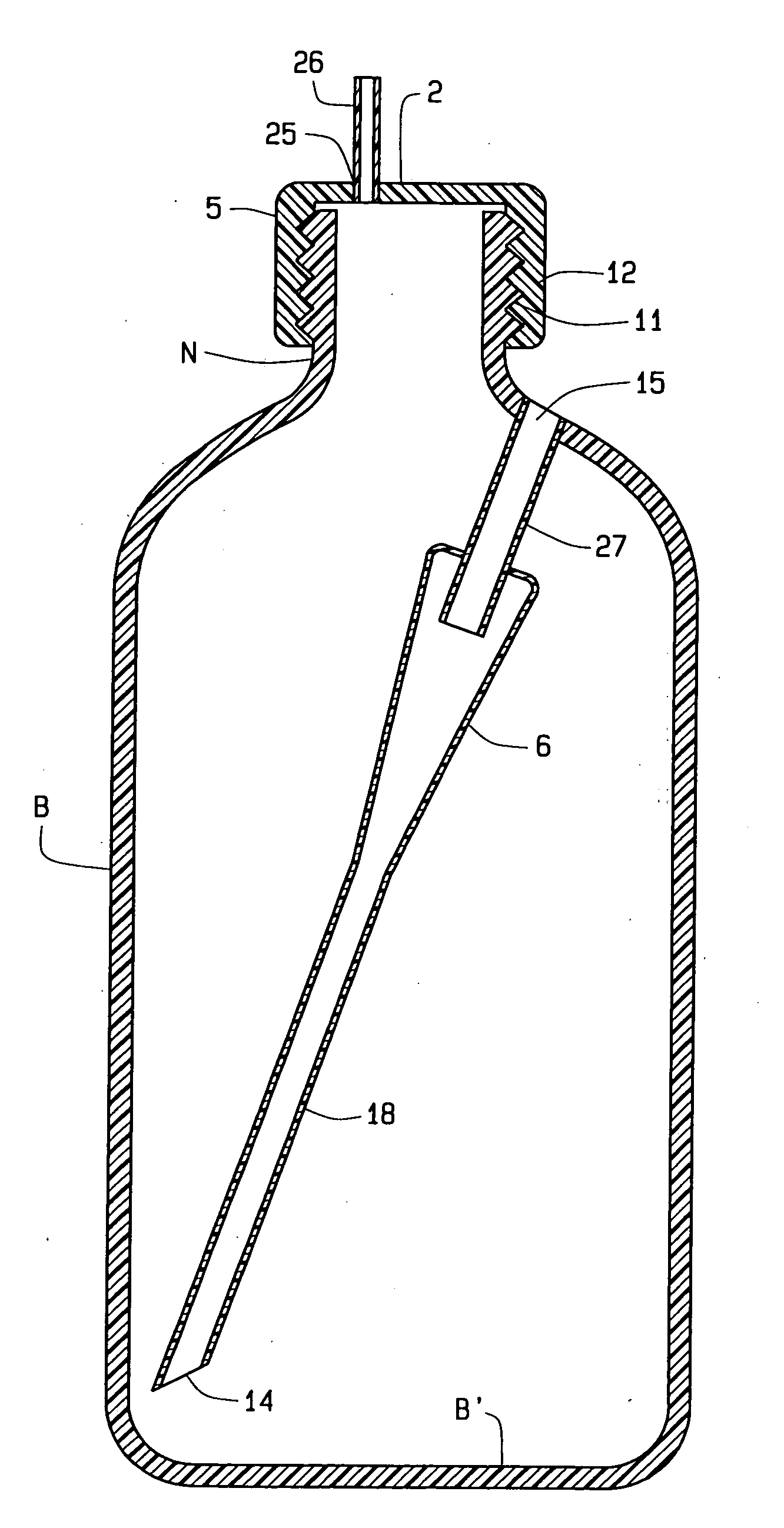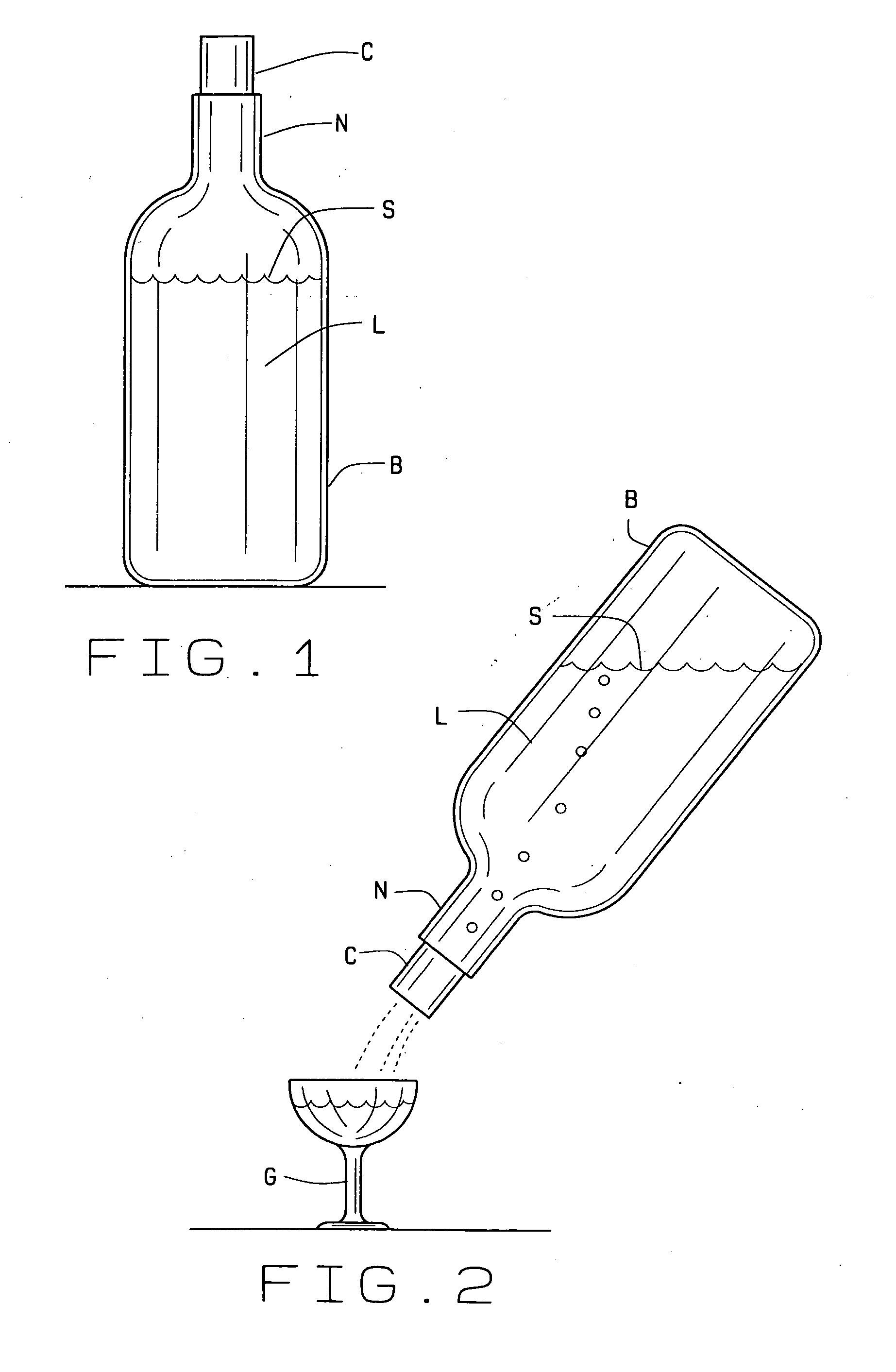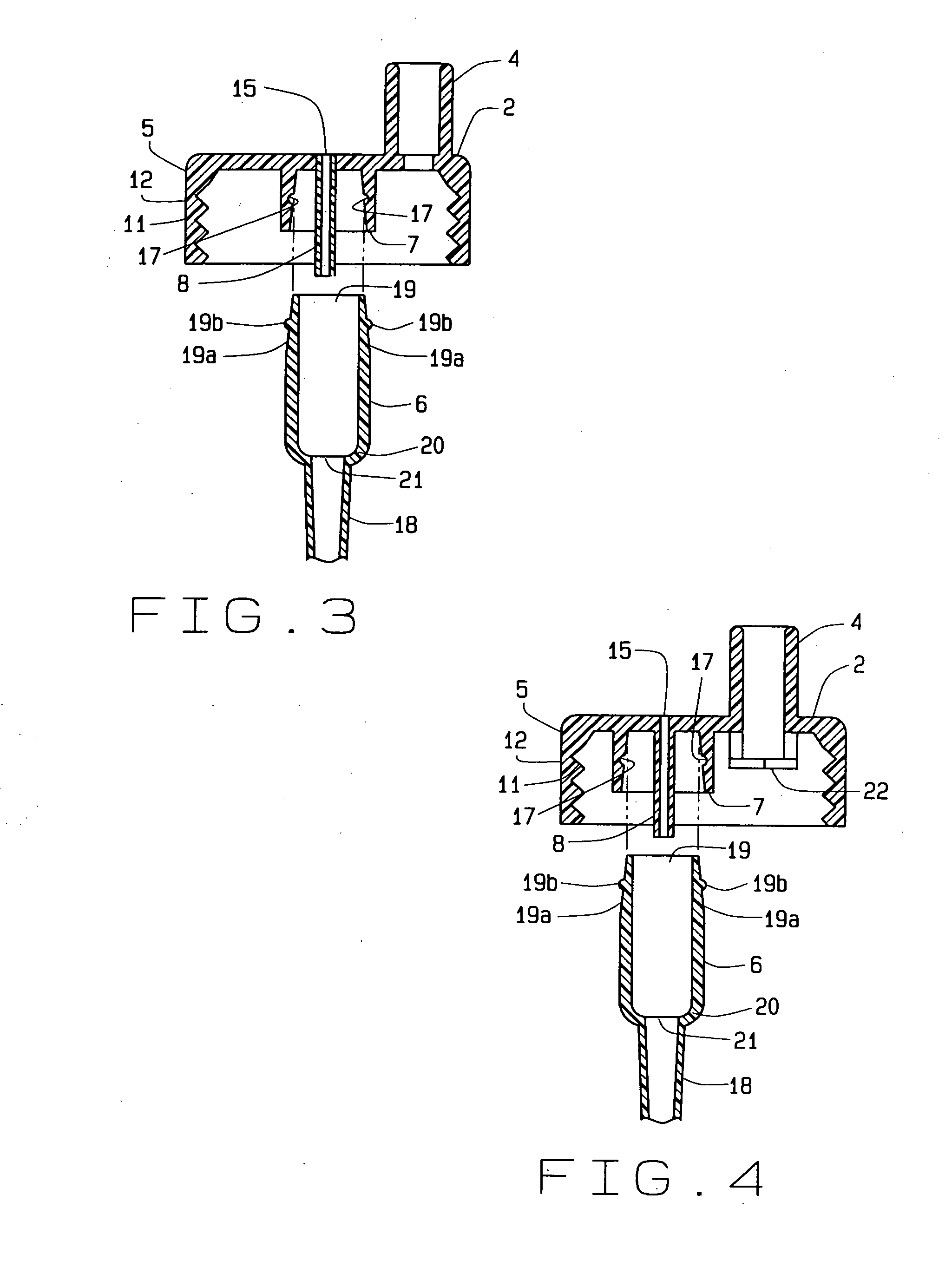Continuous, complete, automatic, non-leaking, non-aerating, positive pressure one-piece vent and pouring combination utilizing one direct venting aperture
a technology of direct venting and pouring combination, which is applied in the direction of liquid flow controllers, teats, packaging, etc., can solve the problems of consumer rejection, other unfavorable chemical reactions, and the quality of wine is deteriorated, so as to achieve rapid and efficient liquid removal
- Summary
- Abstract
- Description
- Claims
- Application Information
AI Technical Summary
Benefits of technology
Problems solved by technology
Method used
Image
Examples
Embodiment Construction
[0124]The present invention overcomes the prior art by providing a venting tube enabling return of any liquid in the venting tube back into the container without leakage out of the container. The present invention provides a vent to overcome the disadvantages of the prior art by providing a liquid aperture, an air aperture, and a venting mechanism of various shapes and proportions to simultaneously vent a container and prevent leakage from the container while utilizing a preferably conical mechanism and utilizing only one additional part to the container and closure. Additionally, double venting and a reservoir are utilized.
[0125]Another embodiment of the present invention overcomes the prior art limitations by providing a closure, venting, and related components that fit on or within the neck of a liquid container, such as a wine bottle, sports bottle, or other container, and minimizes the mixing of air with liquid not yet poured from the container while eliminating spillage from t...
PUM
 Login to View More
Login to View More Abstract
Description
Claims
Application Information
 Login to View More
Login to View More - R&D
- Intellectual Property
- Life Sciences
- Materials
- Tech Scout
- Unparalleled Data Quality
- Higher Quality Content
- 60% Fewer Hallucinations
Browse by: Latest US Patents, China's latest patents, Technical Efficacy Thesaurus, Application Domain, Technology Topic, Popular Technical Reports.
© 2025 PatSnap. All rights reserved.Legal|Privacy policy|Modern Slavery Act Transparency Statement|Sitemap|About US| Contact US: help@patsnap.com



